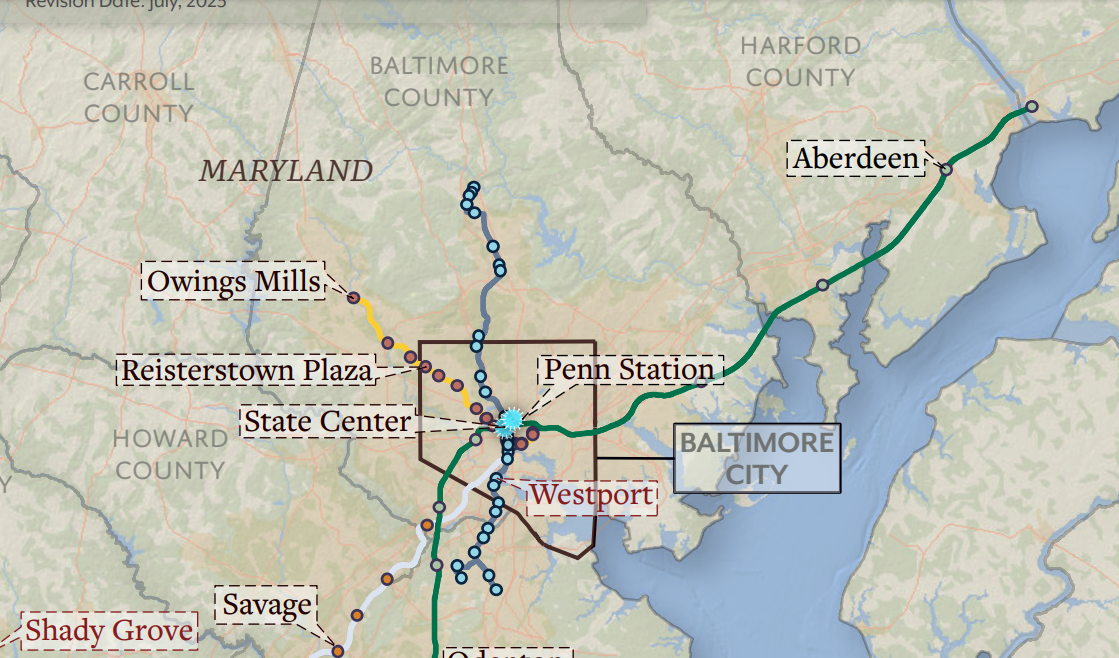BALTIMORE — The state's housing and transportation leaders will now officially prioritize building developments around Maryland's transit stations.
Maryland Department of Transportation signed a formal agreement with the Department of Housing and Community Development to focus on speeding up "dense, mixed-use and mixed-income development within a half-mile of transit stations, also known as transit-oriented development," according to a new press release.
The departments will especially prioritize building affordable housing that's funded by the housing department.
State Housing Secretary Jake Day noted that the state is 96,000 housing units short of what it needs, according to a press release - and "the development of dense housing around transit is critical to addressing our state’s housing shortage..."
The two departments will now work together to find new developments that can be built around transit stations.
Maryland currently has 14 stations designated for transit-oriented development.
In the Baltimore region, they include the Owings Mills Metro, Penn Station in Baltimore, Westport light rail, Aberdeen MARC, Odenton MARC, Reisterstown Plaza Metro, State Center Metro in Baltimore, Savage/Annapolis Junction MARC, and Dorsey MARC.

Maryland has about 85,850 worth of acres within a half-mile radius of its station areas - of which almost 15,000 acres are considered underused or vacant, according to the state's website.
Most recently, the state unveiled a vision plan for the Reisterstown Plaza Metro that features more than 800 housing units.
RELATED | Reisterstown Plaza Metro Station may soon undergo major revamp
Transportation Secretary Paul Wiedefeld called the formalizing of the partnership a "win-win for Maryland families as transit-oriented development will help lower the costs of housing while increasing access and ridership to transit."
More information on Maryland's transit-oriented development goals is available here.



